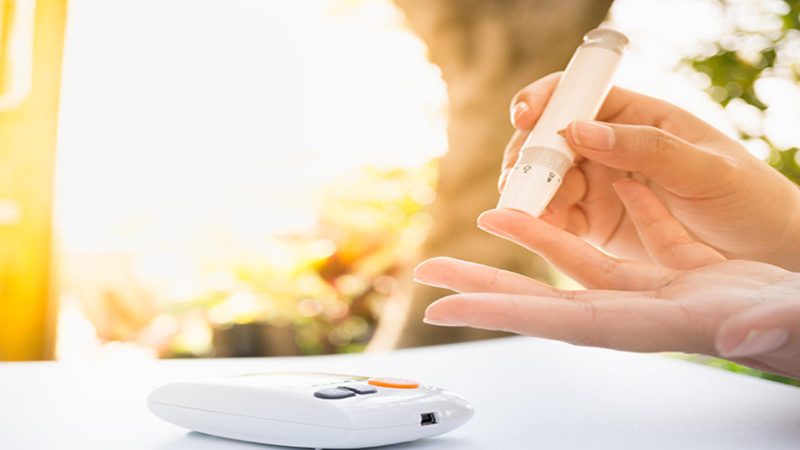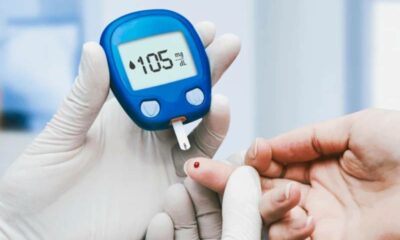Diabetes is a chronic condition affecting millions of people globally. It occurs when the body either struggles to produce enough insulin (Type 1) or can’t effectively use the insulin it produces (Type 2). This leads to high blood sugar levels, which can wreak havoc on your health if left unchecked.
Early detection is crucial for managing diabetes effectively and preventing complications. This guide serves as a comprehensive resource to understand the symptoms of diabetes, identify risk factors, and guide you towards seeking proper medical attention.
Understanding Blood Sugar and Diabetes
Blood sugar, also known as glucose, is the primary energy source for your body’s cells. Insulin, a hormone produced by the pancreas, acts like a key, unlocking cells to absorb glucose from the bloodstream. In healthy individuals, blood sugar levels are tightly regulated.
In people with diabetes, this system malfunctions. Type 1 diabetes results from the immune system attacking insulin-producing cells in the pancreas, leading to insulin deficiency. Type 2 diabetes, the more common form, develops when the body becomes resistant to insulin’s effects or doesn’t produce enough.
Symptoms: Warning Signs of Potential Diabetes
The symptoms of diabetes can vary depending on the type and severity. Here’s a breakdown of the common signs to watch out for:
- Urinary Frequency: One of the hallmark symptoms is frequent urination, especially at night (nocturia). Excess blood sugar forces the kidneys to work overtime to filter and expel it through urine.
- Excessive Thirst and Dry Mouth: Your body tries to compensate for frequent urination by prompting you to drink more fluids. This can lead to constant thirst and a dry, parched mouth.
- Increased Hunger: Even though you might be eating more, your cells aren’t getting enough glucose due to insulin deficiency. This triggers hunger pangs despite consuming adequate calories.
- Unexplained Weight Loss: In Type 1 diabetes, the body struggles to utilize glucose for energy, leading to unintended weight loss despite increased appetite.
- Blurred Vision: High blood sugar can damage blood vessels in the retina, the light-sensitive part of the eye. This can cause blurred vision, difficulty focusing, and even vision loss if left untreated.
- Fatigue and Extreme Tiredness: Cells starved of glucose, their primary fuel source, experience a lack of energy, leading to constant fatigue and tiredness.
- Slow Healing Wounds: Diabetes can impair blood circulation and slow down the healing process of cuts, scrapes, and wounds. You might also experience frequent skin infections.
- Skin Changes: Dark, velvety patches of skin can appear on the neck, armpits, and groin in some people with diabetes (Acanthosis nigricans). Itching and dryness of the skin, especially around the genitals, are also common.
- Tingling, Pain, or Numbness in Hands and Feet: Peripheral neuropathy, nerve damage caused by high blood sugar, can lead to tingling, pain, or numbness in the extremities.
Risk Factors: Who’s More Susceptible to Diabetes?
Certain factors increase your risk of developing diabetes. Here are some key ones:
- Family History: Having a parent or sibling with diabetes significantly increases your risk.
- Weight: Being overweight or obese is a major risk factor, especially for Type 2 diabetes. Excess fat cells can make the body resistant to insulin.
- Age: The risk of Type 2 diabetes increases with age, particularly after 45.
- Prediabetes: A condition with higher than normal blood sugar levels but not high enough for a diabetes diagnosis. If left unaddressed, it can progress to Type 2 diabetes.
- Race and Ethnicity: Certain races and ethnicities, such as African Americans, Hispanic/Latino Americans, Native Americans, and Asian Americans, have a higher risk.
- Gestational Diabetes: Developing diabetes during pregnancy increases your risk of developing Type 2 diabetes later in life.
- Polycystic Ovary Syndrome (PCOS) in Women: This hormonal imbalance can increase insulin resistance and diabetes risk.
- Lifestyle Factors: Physical inactivity, a diet high in processed foods and sugary drinks, and smoking all contribute to diabetes risk.
Living with Diabetes: Management and Support
If diagnosed with diabetes, don’t despair. With proper management and lifestyle changes, you can live a long and healthy life. Here are some key aspects of diabetes management:
- Diet: A healthy diet is essential. Focus on whole, unprocessed foods, fruits, vegetables, and lean proteins. Limit sugary drinks, refined carbohydrates, and unhealthy fats. A registered dietitian can create a personalized meal plan.
- Exercise: Regular physical activity helps your body use insulin more effectively and lowers blood sugar levels. Aim for at least 30 minutes of moderate-intensity exercise most days of the week.
- Medication: Depending on the type and severity of diabetes, you might need medication like insulin or oral medications to control your blood sugar.
- Blood Sugar Monitoring: Regularly monitoring your blood sugar levels helps you understand how your body reacts to food, exercise, and medication.
- Stress Management: Chronic stress can elevate blood sugar levels. Practice relaxation techniques like yoga, meditation, or deep breathing to manage stress effectively.
- Foot Care: Diabetes can increase the risk of foot problems. Inspect your feet daily for cuts, sores, or infections. Wear proper footwear and maintain good hygiene.
- Regular Doctor Visits: Schedule regular checkups with your doctor to monitor your blood sugar control and check for potential complications.
- Support System: Having a strong support system of family, friends, or a diabetes support group can be invaluable. They can provide encouragement, motivation, and share valuable experiences.
Preventing Diabetes: Taking Charge of Your Health
While Type 1 diabetes isn’t preventable, you can significantly reduce your risk of developing Type 2 diabetes by adopting healthy lifestyle habits:
- Maintain a Healthy Weight: Losing even a modest amount of weight can significantly improve insulin sensitivity.
- Eat a Balanced Diet: Focus on whole, unprocessed foods and limit sugary drinks and unhealthy fats.
- Exercise Regularly: Aim for at least 30 minutes of moderate-intensity exercise most days of the week.
- Manage Stress: Chronic stress can elevate blood sugar levels. Practice relaxation techniques to manage stress effectively.
- Get Regular Checkups: Schedule regular checkups with your doctor, especially if you have risk factors for diabetes.
Conclusion
Understanding the symptoms and risk factors for diabetes empowers you to take charge of your health. Early detection and management are crucial for preventing complications associated with diabetes. By adopting healthy lifestyle changes and working with your doctor, you can effectively manage diabetes and live a fulfilling life.

 Diabetology2 weeks ago
Diabetology2 weeks ago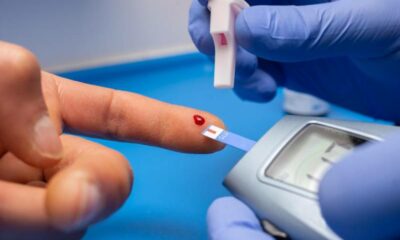
 Diabetology1 week ago
Diabetology1 week ago
 Diabetology6 days ago
Diabetology6 days ago
 Diabetology7 days ago
Diabetology7 days ago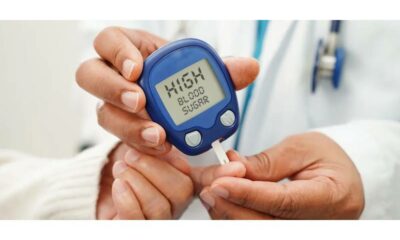
 Diabetology7 days ago
Diabetology7 days ago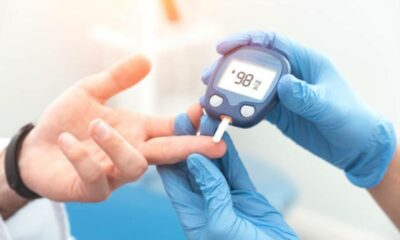
 Diabetology4 days ago
Diabetology4 days ago
 Diabetology4 days ago
Diabetology4 days ago
 Diabetology2 days ago
Diabetology2 days ago
